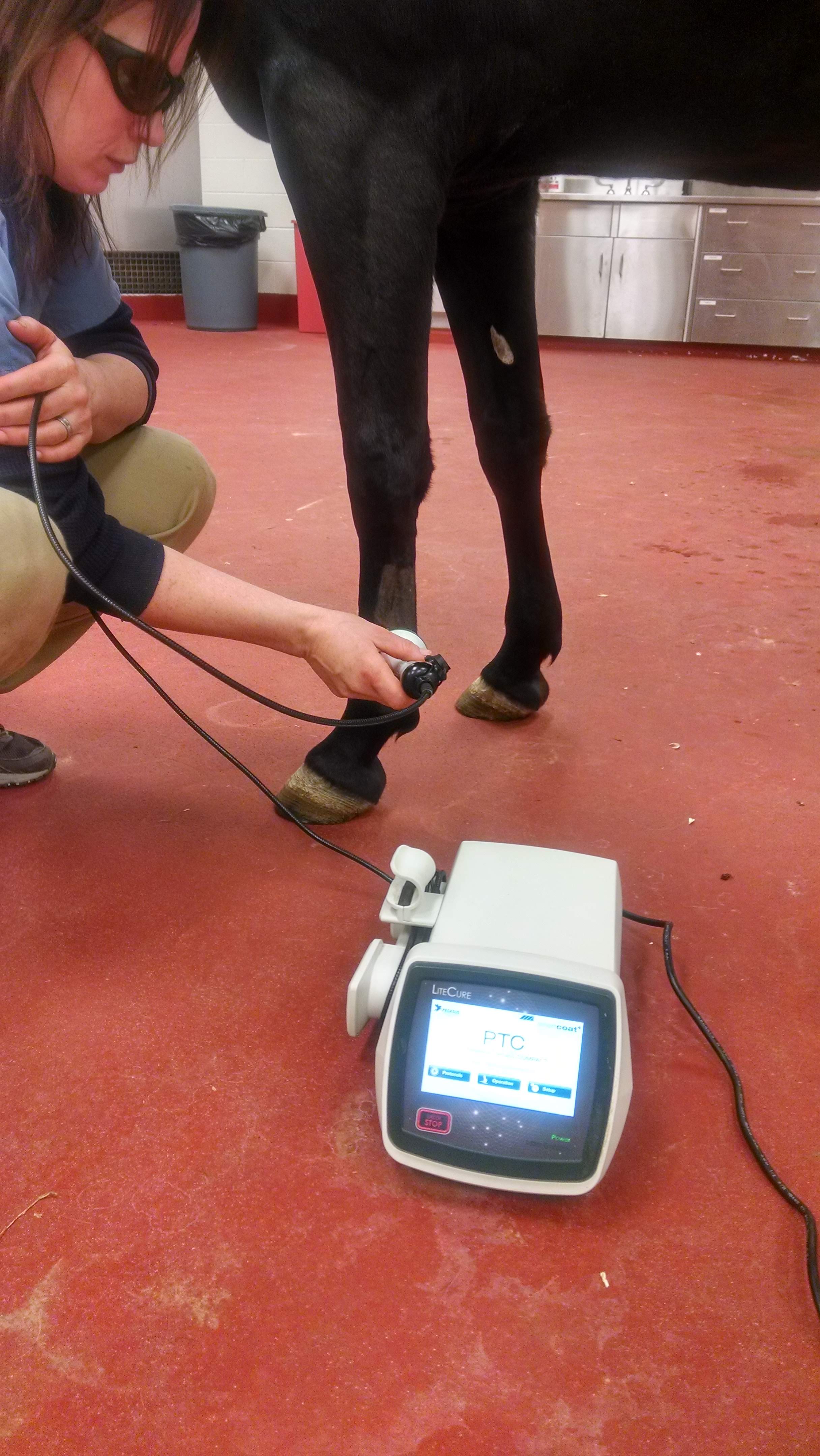Everything You Need to Know About Equine Therapy for Mental Health
Wiki Article
How Laser Treatment in Equine Treatment Is Changing Veterinary Look After Steeds
Laser therapy has actually arised as a transformative approach in equine veterinary treatment, giving a non-invasive solution that quickens recovery and boosts overall health. The mobility and adaptability of laser treatment devices better highlight their expanding indispensability amongst veterinarians.
Comprehending Laser Therapy
Recognizing laser therapy is vital for appreciating its role in equine therapy. Laser treatment, additionally referred to as photobiomodulation, entails the application of certain wavelengths of light to cells, which can result in various biological impacts. This restorative modality utilizes the power of light power to permeate the skin and underlying cells, stimulating mobile processes and enhancing tissue repair.The innovation behind laser treatment is grounded in the concept of photochemistry, where photons are soaked up by chromophores within cells, resulting in boosted ATP manufacturing and modulation of responsive oxygen species. This, consequently, advertises mobile expansion, lowers swelling, and speeds up healing. Veterinary specialists use different kinds of lasers, including low-level lasers (LLLT) and high-power Class IV lasers, relying on the specific restorative objectives and the nature of the equine condition being dealt with.
Various laser wavelengths and power settings are meticulously selected to target different cells midsts and achieve preferred medical end results. Safety procedures are extremely important, as inappropriate use can bring about thermal damages or suboptimal therapeutic results. Hence, an extensive understanding of laser therapy's mechanisms and applications is essential for its effective execution in equine vet practice.
Advantages for Equine Wellness
The myriad advantages of laser therapy for equine health incorporate improved healing, pain decrease, and improved wheelchair. This advanced therapy technique leverages particular wavelengths of light to penetrate tissues, boosting mobile function and promoting fast cells fixing. The non-invasive nature of laser treatment makes certain very little anxiety and pain for the equine, helping with a smoother healing process.
Enhanced flexibility is another crucial advantage, specifically for performance and working horses. By decreasing inflammation and pain, and boosting tissue repair work, laser treatment assists in bring back joint function and muscle mass versatility. The advancing impact of these benefits is not just a quicker return to normal task yet additionally a total improvement in the equine's quality of life. Therefore, laser treatment stands as a transformative device in contemporary equine veterinary care.
Usual Problems Treated
Laser treatment has emerged as a versatile therapy choice for a selection of usual equine conditions. Furthermore, laser treatment is reliable for problems like osteo arthritis, where it helps you can check here reduce joint inflammation and promote cells repair work.Wound management is an additional location where laser treatment has actually shown considerable promise. Persistent wounds or slow-healing ulcers can be particularly difficult in horses, however laser therapy improves mobile regrowth and boosts blood circulation, hence speeding up the recovery process. Laser treatments have been efficiently utilized in taking care of unguis problems such as laminitis and abscesses, minimizing pain and advertising quicker healing.
Equine athletes usually suffer from performance-related problems like muscular tissue soreness and tension fractures. Laser treatment help in lowering muscular tissue fatigue and accelerates the recovery of micro-injuries, hence guaranteeing that steeds go back to come to a head efficiency much more rapidly. By addressing these diverse problems, laser therapy is transforming the landscape of vet treatment, supplying a non-invasive, efficient option to traditional therapies.
Innovation Behind Laser Treatment

Laser tools used in veterinary medicine commonly use low-level laser therapy (LLLT) or cold laser treatment. Unlike high-powered medical lasers, these tools run at reduced power levels, maximizing restorative benefits while lessening thermal damage. The power from the laser light stimulates adenosine triphosphate (ATP) production, improves mobile metabolism, and increases cells repair work processes.
Modern laser therapy devices for equine therapy is developed with flexible settings to cater to the specific needs of different tissues and conditions. In addition, advancements in laser technology have actually led to the development of mobile, portable tools, making it simpler for vets to supply treatment in a range of settings, from clinics to stables.
Success Stories and Study
Showcasing the tangible advantages More Bonuses of laser therapy, numerous success stories and study illuminate its transformative effect on equine health. One such case entails a pureblooded racehorse suffering from chronic tendonitis. Typical treatments generated minimal enhancement, yet after integrating laser treatment right into the routine, the steed exhibited significant decreases in swelling and discomfort within weeks, eventually returning to affordable auto racing.One more compelling instance includes a dressage equine diagnosed with extreme pain in the back, limiting its performance. A vet group employed low-level laser treatment (LLLT) to target the swollen areas, leading to significant enhancement in flexibility and a remarkable reduction in discomfort. Over a number of sessions, the horse restored its peak form, showcasing the efficacy of laser treatment in dealing with bone and joint issues.
Furthermore, a research study carried out at a leading equine clinic examined 50 equines with different soft cells injuries treated with laser therapy. The results stood out: 85% of the steeds showed increased healing times and boosted flexibility. These instances emphasize the adaptability and efficiency of laser therapy in equine medicine, providing a non-invasive, scientifically-backed method to boosting recovery and efficiency in steeds.
Verdict
Laser therapy is reinventing equine vet treatment by offering a non-invasive therapy that speeds up healing, lowers swelling, and eases discomfort. With its effectiveness in treating a variety of problems, from musculoskeletal injuries to persistent conditions like osteoarthritis, this modern technology significantly boosts equine health and wheelchair. The mobility and adaptability of laser treatment further highlight its transformative effect on veterinary techniques, solidifying its role as an essential device in modern equine health care.Report this wiki page